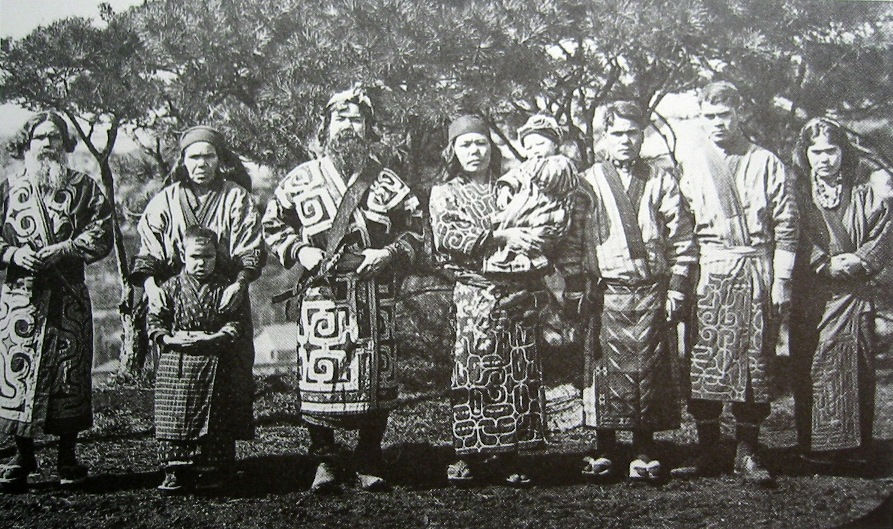“Golden Kamuy”: Underrated Masterpiece – by Cheyenne Jaques
- Art Ducko

- May 9, 2018
- 3 min read

I recently picked up Golden Kamuy by Satoru Noda after seeing some intriguing fanart, and it is safe to say it has become my favorite series in less than a week. This work follows Sugimoto Saichi, a veteran of the Russo-Japanese war who has become widely known forsurviving any life-threatening situation, crowning him the title of “Immortal Sugimoto.”
He resides in Hokkaido after his traumatizing service, soon learning of a mysterious hidden stash of gold that was stolen from a nearby tribe of Ainu, one of the indigenous ethnic groups of Japan. After traversing the harsh Hokkaido wilderness, he meets young Asirpa, a headstrong Ainu girl who is a survival expert, thanks to the knowledge and traditions passed down by her family lineage.
Being a part of the specific tribe this legendary gold was stolen from, Sugimoto and Asirpa decide to team up and track down this treasure and uncover the mystery of its disappearance. There’s just one thing that stands in their way: 24 prisoners scattered across Japan with pieces of the treasure map tattooed on their torsos, the map arranged in such a way that it can only be understood when said prisoner is skinned. The story follows Sugimoto and Asirpa in a race against time to find these prisoners before they fall into the hands of those willing to do anything for the Ainu treasure.

Though the plot of this manga alone is enough to keep readers engaged, the author goes the extra mile in packing every chapter with real historical information in the context of the story. I was not familiar with the Ainu people nor the conflicts of the Russo-Japanese war, yet Golden Kamuy’s level of teaching rivals the breadth of a real history class. Don’t let this discourage you, the information given is in no way tiresome, rather it serves as a means of grounding the reader in the concrete information that is crucial to understanding the multiple themes of the story. The story goes into great detail about the forgotten Ainu people in a very respectful way, never once did the dialogue fall into the stereotypical path of degrading indigenous cultures for their traditional methods. In fact, the Ainu traditions are always praised for their vast knowledge of the natural world.
This leads me to the most important part of Golden Kamuy: the characters. Every single character in this series has a memorable personality and design, from the trivial background characters to the imposing villains who battle against Sugimoto and Asirpa for the gold.
The blend of comedy and horror lends itself nicely to the wide array of personalities that makes every chapter memorable for its iconic moments. As for Sugimoto and Asirpa, these two protagonists display very refreshing takes on their designated tropes. Sugimoto is the battlescarred veteran, and yet his immense strength is matched by his sensitivity. Instead of being riddled with toxic masculinity, Sugimoto is careful and respectful of both Asirpa and her people, taking time to listen to their ways of life and actually adopt these traditions into his own day to day routine. He may be known as vicious killer, but he was a victim of circumstance in a war in which his only chance at survival was outlasting his foes. Instead of glorifying the war, he looks back on it remorsefully and takes steps in his daily life to dissolve unnecessary violence. This being said, when push comes to shove, it is very satisfying to watch him battle against those who look to harm Asirpa.

Lastly, Asirpa herself. Asirpa is just as refreshing as Sugimoto in that she is a young girl who is never looked down upon for her age, ethnicity, or gender. Asirpa is valued just as much as her masculine friend, bringing an essential skill set to the team that Sugimoto would be lost without. She has a cheerful personality with a twist of stubbornness, her vast knowledge and critical thinking balancing out Sugimoto’s raw strength. One of the most important factors of Asirpa’s character is that she is never sexualized, a common pit fall of writing young women in media. When I first began reading this series, I was afraid there would be an upsetting forced romance between Sugimoto and Asirpa, but luckily, the author breaks the mold and keeps their relationship healthy as a mentor and pupil. Instead of highlighting her racial background or femininity, Asirpa’s scenes are hilariously charming with her iconic facial expressions and close interactions with Sugimoto.

I highly recommend this manga to anyone who enjoys treasure hunting genres, fast paced action, memorable villains, tasteful history lessons about new cultures, and an unforgettable art style that cannot be matched.
Major trigger warnings for Golden Kamuy: Graphic gore, intense violence, frequent gun use, animal death, military/war themes, body horror.
.png)
















Comments